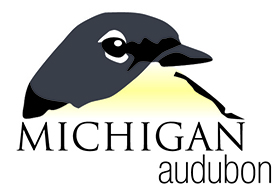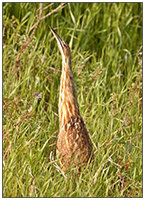Make sure to register for the Birders' Soirée!
The Birders' Soirée is held on Friday evening before CraneFest. The evening features a social hour, presentation, raffle giveaway and of course a top-notch silent auction with proceeds benefiting theBernard W. Baker Sanctuary!
Schuler's Restaurant & Pub of Marshall, Michigan will be catering the event with light hors d'oeuvres including fruit and veggie platters and specialty home-made cheese and crackers with delicious cupcakes from Cakes A Bloomin' of Grand Ledge, Michigan. All along-side locally made beers and wines (non-alcoholic drinks are available).
Date: Friday, October 11, 2013
Time: 7PM - 10PM
Location: Convis Township Hall (19500 15 Mile Rd Marshall, MI 49068)
Cost: $25 per person for Michigan Audubon members, or $40 a couple. Non-member tickets are $30 per person or $50 per couple
Time: 7PM - 10PM
Location: Convis Township Hall (19500 15 Mile Rd Marshall, MI 49068)
Cost: $25 per person for Michigan Audubon members, or $40 a couple. Non-member tickets are $30 per person or $50 per couple
Richard Crossley Presentation at the Birders' Soirée
Crossley will be discussing the Past, Present and Future –Tales of lessons learned while growing up in the wild British birding scene, from travels around the world to living today in Cape May, NJ. It will be a fast-paced, humorous story told in a Yorkshire brogue through a camera lens that loves color and art. Come listen to stories of his past and present. Perhaps it will change your outlook on the future of birding, lifestyles and nature!
Crossley's Bio
Richard Crossley is an internationally acclaimed birder, award winning author and photographer. Crazy, wildly passionate, driven and single-minded are just a few of the words used to describe his love of birding and the outdoors.
After 20 years hiding in the business world while raising his family, Richard set himself a new goal - to help popularize birding and the outdoors through books and multi-media. He first became involved in “The Shorebird Guide”. This gave him a new passion for photography and drove him to inspire people to see wildlife through new eyes and in a different way.
Next, The Crossley ID Guide: Eastern Birds turned field guide design upside down. By showing a more lifelike and complete picture, kids and beginners were better able to understand the looks and lives of birds. Recognized with multiple awards, this book is the first in a series with a fresh new approach. Other guides in the The Crossley ID Guide series will consolidate this approach including Raptors (April 2013) Britain and Ireland, Western, Waterfowl and others in the works. This has created a movement for other wildlife guides ...
Your Bird Crew,










 When you see your first pileated woodpecker, your thought might well be, “Now that is a serious woodpecker!” Michigan’s other woodpeckers are substantially smaller, starting with the downy and working up through the hairy, red-headed, black-backed and red-bellied woodpeckers and also including the migratory yellow-bellied sapsucker and northern flicker for good measure. Over the years several people have insisted to me that they have seen ivory-billed woodpeckers in Michigan. Ivory-billed woodpeckers never did nest in Michigan, and if they still exist at all, anywhere, they are extremely rare. There is no doubt that our birds are pileateds.
When you see your first pileated woodpecker, your thought might well be, “Now that is a serious woodpecker!” Michigan’s other woodpeckers are substantially smaller, starting with the downy and working up through the hairy, red-headed, black-backed and red-bellied woodpeckers and also including the migratory yellow-bellied sapsucker and northern flicker for good measure. Over the years several people have insisted to me that they have seen ivory-billed woodpeckers in Michigan. Ivory-billed woodpeckers never did nest in Michigan, and if they still exist at all, anywhere, they are extremely rare. There is no doubt that our birds are pileateds.
.jpg)
.jpg)

